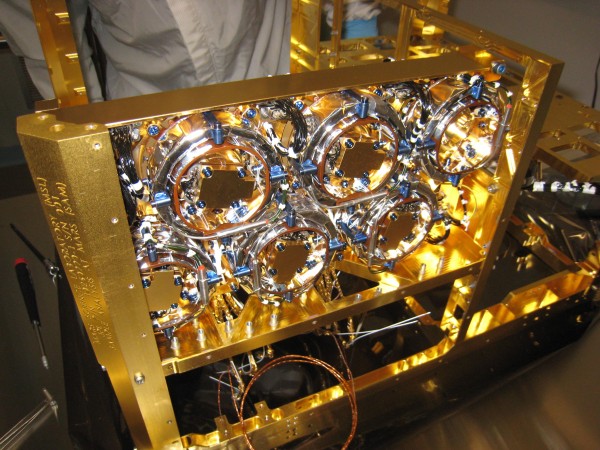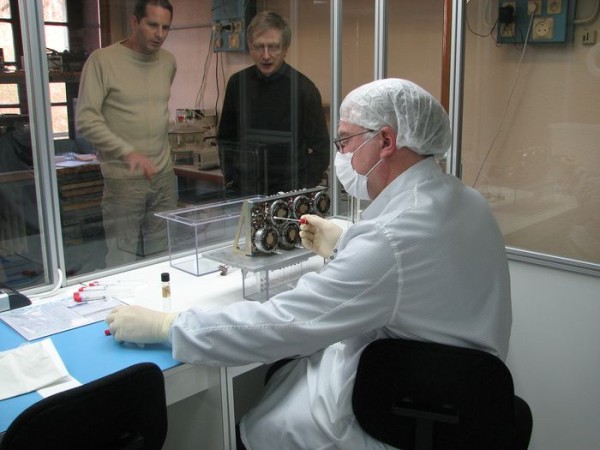SAM-GC
The sample analysis at Mars experiment is the central experiment of the analytical laboratory aboard the Curiosity rover of the Mars Science Laboratory (MSL) mission. Placed under the responsibility of the NASA Goddard Space Flight Center (NASA/SFC, Greenbelt, Maryland, USA), it is composed of 3 additional analytical instruments providing the (molecular, elemental and isotopic) chemical composition of the atmosphere and the surface of Mars :
i) a mass spectrometer, developed by the NASA/GSFC centers
ii) a spectrometer absorption laser (TLS) developed by the NASA Jet Propulsion Laboratory (JPL, Pasadena, USA)
iii) a gas chromatograph (GC) developed jointly by the laboratory atmospheres, environments, space observations (LATMOS) and laboratory Inter-university of atmospheric systems (LISA) under the aegis of the National center for space studies (CNES). This instrument is based on innovative elements of chromatography, developed specifically for this project and adapted to very low volume samples. This instrumental ensemble is primarily dedicated for clues of possible life on Mars (or prebiotic activity). It's mainly to search for and then characterize organic molecules (molecules needed for life as we know) that may be found in the soil of Mars. It should also allow to inform the possible origin of the methane recently detected in the atmosphere of Mars, and which could theoretically be produced by "methanogenic" organizations.
Take-off in the fall of 2011 for arrival 9 months later on Mars !
 |
Figure 1: The SAM_GC instrument developed by LATMOS and LISA was integrated (mounted) in the NASA GSFC center (Maryland, USA) in the SAM spatial experiment of the MSL mission. Calibration operations in simulated Martian environmental conditions occur until delivery of the experiment at the Jet Propulsion Laboratory (Pasadena, USA), any early 2010.
 |
Figure 2: Under the supervision of the SAM_GC head and project leader, an operator proceeds to taking samples for the characterization of bacterial contamination of the instrument. This is done in a clean room; the operator is equipped with protection to avoid contamination of the instrument from the operator.
Contact : Patrice Coll, This email address is being protected from spambots. You need JavaScript enabled to view it.
Page of the NASA/GSFC instrument :
http://science.gsfc.nasa.gov/sed/index.cfm?fuseaction=projects.view&project_id=242

